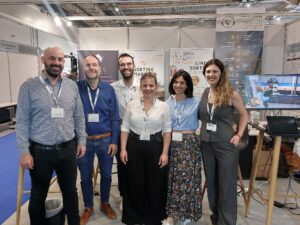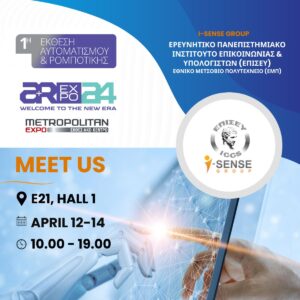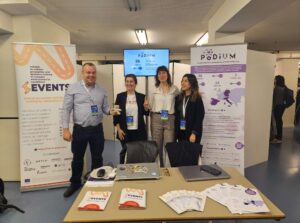Rapid advances in Radio Frequency Identification (RFID) technology, in Micro-Electro-Mechanical Systems (MEMS), in lower-power wireless networking and in computation give hopes for a new generation of small, inexpensive, networked sensors that can be distributed on civil and building structures to provide accurate, quantitative information on the structure’s physical state while in service. This information can be used to assess the structural condition of the monitored facility and aid decision making on rehabilitation so that safety can be attained and rehabilitation costs can be reduced. The most relative properties for structural analysis are movement (acceleration and displacement) and forces. The corresponding sensors that produce these measurements are accelerometers and strain sensors (stresses and forces can be deduced from strain measurements).
Technological Achievements:
Integrated package of strain and accelerometer sensors attachable to reinforced concrete constructions. Both sensors were designed using a capacitive sensing principle. The design of the sensors is based on the inputs of the end users, and is designed to measure strain over a +/- 30,000µ? (micro-strain) range with a resolution of 10µ?. The user can connect either of the two sensors to the readout and, a maximum output range of the two sensed signals, namely ±2 g or ±30,000 micro-strains appear at the output.
The MEMS sensors are integrated into wireless sensor modules forming a monitoring system able to communicate the measurement data to a remote base station.
Developed software able to estimate the stresses and their resultants, the internal forces by calculating the resulting internal forces at critical cross-sections of the structural members through measurements of strains at four points in each cross-section.
Developed software able to perform assessment of the local stability conditions of the structure. The assessment involves the detection of the cross-sections where plastic hinges are formed and the estimation of the corresponding damage degree. From the successive imposed displacements and the corresponding structural analyses the bending moment-curvature diagrams for the cross-sections are produced.
Developed software taking input from the software on damage due to differential settlements on the magnitude of differential settlements as a function of time. Thus the software can establish, timely, whether foundation movement is stabilising or is progressive and threatening for the building reducing dramatically the expense of remedial measures.
The above software was integrated in a Decision Support System (DSS) for proactive rehabilitation and rehabilitation following seismic damage. This DSS also includes an expert system with a friendly user interface and knowledge and data DBs. A graphical user interface provides the graphical environment with which the end-user can retrieve current and historical data from the DBs while also provides real-time alerts and warnings.
MEMSCON sensors were tested in laboratory conditions on both reduced scale specimens, to assess their performance, and full-scale specimens, to assess the reliability of the whole system.
For more information about the project achievements please contact Dr. Angelos Amditis, Project Coordinator, Institute of Communication and Computer Systems (ICCS),a.amditis@iccs.gror visit the following page:http://cordis.europa.eu/fetch?CALLER=NEW_RESU_TM&ACTION=D&RCN=54017





